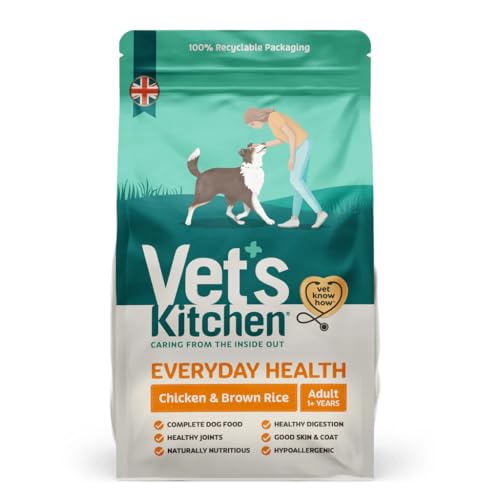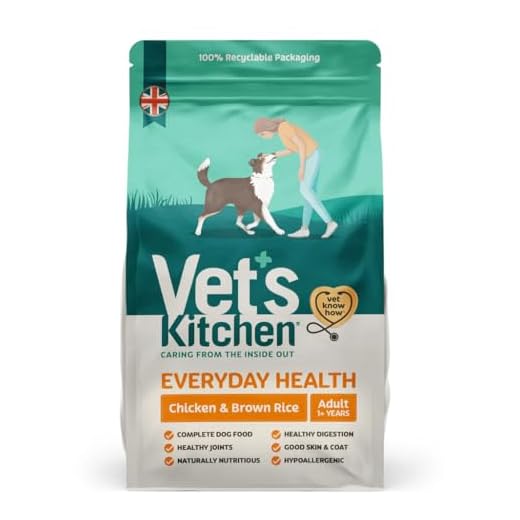




A typical recommendation is to maintain a chicken and rice diet for three to five days. This approach often helps in managing digestive issues, providing a bland meal that is gentle on the stomach. Monitoring the pet’s condition during this period is crucial; if symptoms persist beyond this timeframe, consulting a veterinarian is advisable.
In my experience, I noticed significant improvement in my furry friend’s health after switching to this bland diet. Initially, I was apprehensive about how long to continue, but keeping it simple and sticking to the three-to-five-day guideline worked wonders. Watching my dog gradually regain energy and enthusiasm for meals was reassuring.
After the initial days, introducing regular foods back into the diet should be done slowly. Mixing a small portion of their usual kibble with chicken and rice can ease this transition. This method allows the digestive system to adjust without overwhelming it. Patience during this process is key, as rushing can lead to setbacks.
Each canine is unique, so personal observations can provide valuable insights. Keeping a close eye on how they respond to the gradual reintroduction of regular meals can inform future feeding decisions.
Duration for the Poultry and Grain Diet
Typically, a span of three to five days suffices for a temporary meal plan focused on poultry and grain. This approach aids in resolving digestive troubles and allows the stomach to recover. Adjustments must be made if symptoms persist beyond this timeframe.
Monitoring recovery signs is critical. If the canine shows improvement in appetite and stool consistency after a few days, a gradual reintroduction of regular meals can commence. However, should issues linger, consulting a vet for further guidance becomes necessary. Each pet is unique, and their health status should dictate dietary decisions.
For those canines with ongoing sensitivities or health conditions, this regimen might extend beyond a week. Close observation during this period is essential to determine the right moment for transition back to a regular diet. Always prioritise the well-being of your furry friend above all else.
Understanding the Benefits of Chicken and Rice for Dogs
Providing a blend of poultry and grains offers numerous advantages for canine companions. This combination is easily digestible, making it a go-to for pets with stomach issues. The simplicity of the ingredients ensures minimal irritation to the digestive tract, which is especially beneficial during recovery from gastrointestinal distress.
Nutritional Value
Poultry is a rich source of protein, promoting muscle recovery and overall health. Grains contribute carbohydrates, supplying energy necessary for daily activities. This mix also contains essential vitamins and minerals that support various bodily functions, fostering a well-rounded diet for furry friends.
Weight Management
This diet aids in maintaining a healthy weight. The lean protein from poultry helps build muscle without excessive fat, while the carbohydrates provide sustained energy, preventing overfeeding and helping with portion control. It’s particularly useful for dogs needing to lose weight or maintain a healthy figure.
Signs That Your Dog Needs a Special Diet
Unusual weight loss or gain can indicate that a pet requires a tailored nutritional plan. Monitoring body condition regularly can help identify shifts in weight that may necessitate dietary adjustments.
Frequent gastrointestinal upset, such as vomiting or diarrhoea, often signals the need for a specialised regimen. If these symptoms persist, it’s crucial to consult a veterinarian for appropriate dietary recommendations.
Changes in energy levels may also suggest a need for a different diet. If a normally active pooch appears lethargic or uninterested in play, it might be time to evaluate their nutrition.
Skin irritations, itching, or excessive shedding could hint at food sensitivities or allergies. In such cases, switching to a hypoallergenic or limited ingredient diet may provide relief.
Persistent bad breath or dental issues might indicate that a specific dietary approach is necessary. A vet can recommend options that promote oral health while meeting other nutritional needs.
Lastly, age-related health concerns can dictate dietary changes. Senior pets often benefit from nutrition that supports joint health or enhances cognitive function. Transitioning to a senior formula can be beneficial for older companions.
Recommended Duration for Feeding Chicken and Rice
The typical recommendation for maintaining a diet of boiled poultry and grains spans from three to five days. This timeframe allows for the digestive system to stabilise after episodes of gastrointestinal upset. If there’s no improvement within this period, a consultation with a veterinarian is advisable.
Observe closely during this phase. If the canine shows signs of discomfort or fails to respond positively, it may indicate the need for a more tailored nutritional approach. Transitioning back to regular food should be gradual, typically taking around a week, to prevent further digestive disturbances.
Here’s a simple table to help track the feeding schedule:
| Day | Diet Plan | Notes |
|---|---|---|
| 1 | 100% poultry & grains | Monitor for any signs of discomfort. |
| 2 | 100% poultry & grains | Check for improvement in symptoms. |
| 3 | 100% poultry & grains | Evaluate appetite and energy levels. |
| 4 | 100% poultry & grains | Continue monitoring and prepare for reintroduction of regular food. |
| 5 | 100% poultry & grains | Decide on next steps based on health status. |
It’s wise to consult with a vet before making any dietary changes. They can provide tailored advice based on specific health conditions. Adjustments to nutrition can be crucial for recovery and overall wellness.
Transitioning Back to Regular Dog Food
Begin the switch to standard meals gradually, mixing a small portion of regular kibble with the current diet. Use a ratio of 25% regular food to 75% bland diet during the first few days. Monitor for any signs of gastrointestinal upset, such as vomiting or diarrhoea. If everything goes smoothly, increase the regular food to 50% after three days.
Adjusting Portions
As the familiar diet is reintroduced, it’s crucial to adjust portions based on the dog’s size and activity level. Keep an eye on weight; a dog that’s too thin might need larger portions, while an overweight pet should receive less. Incorporate a variety of proteins and vegetables to ensure a balanced intake.
Monitoring Health
During this transition, regular check-ups with the vet are advisable to ensure the digestive system adapts well. Look for any changes in behaviour or energy levels. If any issues arise, revert to the previous diet for a short period before trying again. Patience is key in this process, as it can take time for a dog’s stomach to adjust to new foods.
Monitoring Your Dog’s Health During the Diet
Regularly observe the condition of your furry friend while on a chicken and rice regimen. This blend can aid in recovery, but it’s crucial to keep an eye on various health indicators.
Key Health Indicators to Watch
- Appetite: Note any changes. A decrease might indicate discomfort or an adverse reaction.
- Stool Quality: Consistency and colour are important. Look for signs of diarrhoea or constipation.
- Energy Levels: Monitor activity. A lack of enthusiasm for playtime might signal an issue.
- Weight Management: Keep track of body weight. Unintended weight loss or gain should raise concerns.
- Hydration: Ensure constant access to fresh water. Changes in drinking habits can indicate health problems.
When to Consult a Veterinarian
If any of the aforementioned signs persist, seek professional advice. Regular check-ups can ensure your pet remains healthy throughout this dietary phase. For example, if bladder health is a concern, consider exploring best homemade food for dogs with bladder stones.
Being attentive to these factors will help ensure a smooth transition back to regular meals and maintain your pup’s well-being during this period. Trust your instincts and stay observant!
Common Mistakes to Avoid When Feeding Chicken and Rice
One common pitfall is over-seasoning the mixture. Adding salt, spices, or sauces can upset a sensitive stomach and defeat the purpose of this bland diet. Stick to plain, boiled chicken and white rice without any additional ingredients.
Another frequent mistake is serving portions that are too large. Giving an excessive amount can lead to further digestive issues. It’s better to start with smaller servings and adjust based on your canine’s reaction.
Ignoring Allergies or Sensitivities
Some animals may have allergies to chicken or rice. Always monitor for signs of discomfort or adverse reactions. If you notice symptoms like itching, vomiting, or diarrhoea, consult a vet immediately.
Not Keeping an Eye on Hydration
While the meal itself is important, hydration plays a crucial role in recovery. Make sure fresh water is always available. Sometimes, pets can become dehydrated if their diet lacks moisture.
- Mixing in too many ingredients at once.
- Skipping veterinary advice before starting this diet.
- Neglecting to transition gradually back to regular food.
- Forgetting to track weight changes during the diet.
Being mindful of these mistakes can significantly improve the experience of introducing this bland diet. Keep it simple, observe closely, and always prioritise health for a smooth dietary transition.






